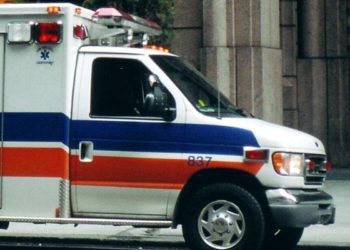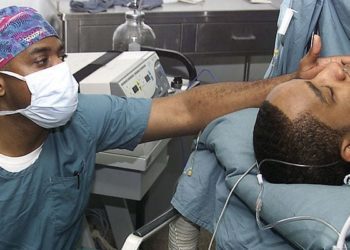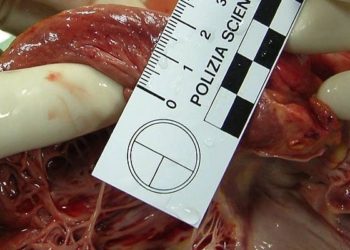Video surveillance sheds light on causes of falls in the elderly
Image: PD
1. Most video-recorded falls were self-induced and due to incorrect transfer of body weight.
2. Slips were the least common cause of falls.
This study provides objective data on the causes of falls in elderly adults in two long-term care facilities. The authors’ extensive analysis of causes of falls as well as activity at time of fall can suggest new directions for fall research and for clinical assessments of fall risk.
Although previous survey-based studies suggest that slips are a common cause of falls, slips only accounted for 3% of falls in this report. Most laboratory-based tests simulate slips rather than trips and bumps, which were found to be more common than slips in this study. This challenges the conventional view of slips as the most common cause of falls in elderly adults.
In a broader context, this study argues for a greater role for real-world fall footage analysis in fall research.
Click to read the study in The Lancet
Click to read an accompanying editorial in The Lancet
Background reading:
This [observational] study: Existing networks of cameras in two long-term care facilities in British Columbia were used to gather footage of falls in common areas between April 2007 and June 2010.
During the study period, falls in common areas were in the minority (45% and 34% in the two facilities) and not all falls in common areas were recorded on video. There was a total of 227 falls captured on video, involving 130 individuals. Circumstances of falls were determined by teams of researchers using a questionnaire verified for inter-rater reliability.
Most falls were self-induced, by incorrect transfer or shifting of body weight (41%). Other common causes were trips/ stumbles (21%), hits/ bumps (11%), loss of support (11%) and loss of consciousness (11%). Slips were the least common cause of falls (3%).
The most common activity at time of fall was walking forward (24%), followed by standing quietly (13%) and sitting down/ lowering (13%).
In sum: This study provides objective data on the causes of falls in elderly adults in two long-term care facilities. The authors’ extensive analysis of causes of falls as well as activity at time of fall can suggest new directions for fall research and for clinical assessments of fall risk.
Although previous survey-based studies suggest that slips are a common cause of falls, slips only accounted for 3% of falls in this report. Most laboratory-based tests simulate slips rather than trips and bumps, which were found to be more common than slips in this study. This challenges the conventional view of slips as the most common cause of falls in elderly adults.
In a broader context, this study argues for a greater role for real-world fall footage analysis in fall research.
Click to read the study in The Lancet
Click to read an accompanying editorial in The Lancet
By [TJ] and [MP]
© 2013 2minutemedicine.com. All rights reserved. No works may be reproduced without written consent from 2minutemedicine.com. Disclaimer: We present factual information directly from peer reviewed medical journals. No post should be construed as medical advice and is not intended as such by the authors or by 2minutemedicine.com. PLEASE SEE A HEALTHCARE PROVIDER IN YOUR AREA IF YOU SEEK MEDICAL ADVICE OF ANY SORT. Content is produced in accordance with fair use copyrights solely and strictly for the purpose of teaching, news and criticism. No benefit, monetary or otherwise, is realized by any participants or the owner of this domain.






